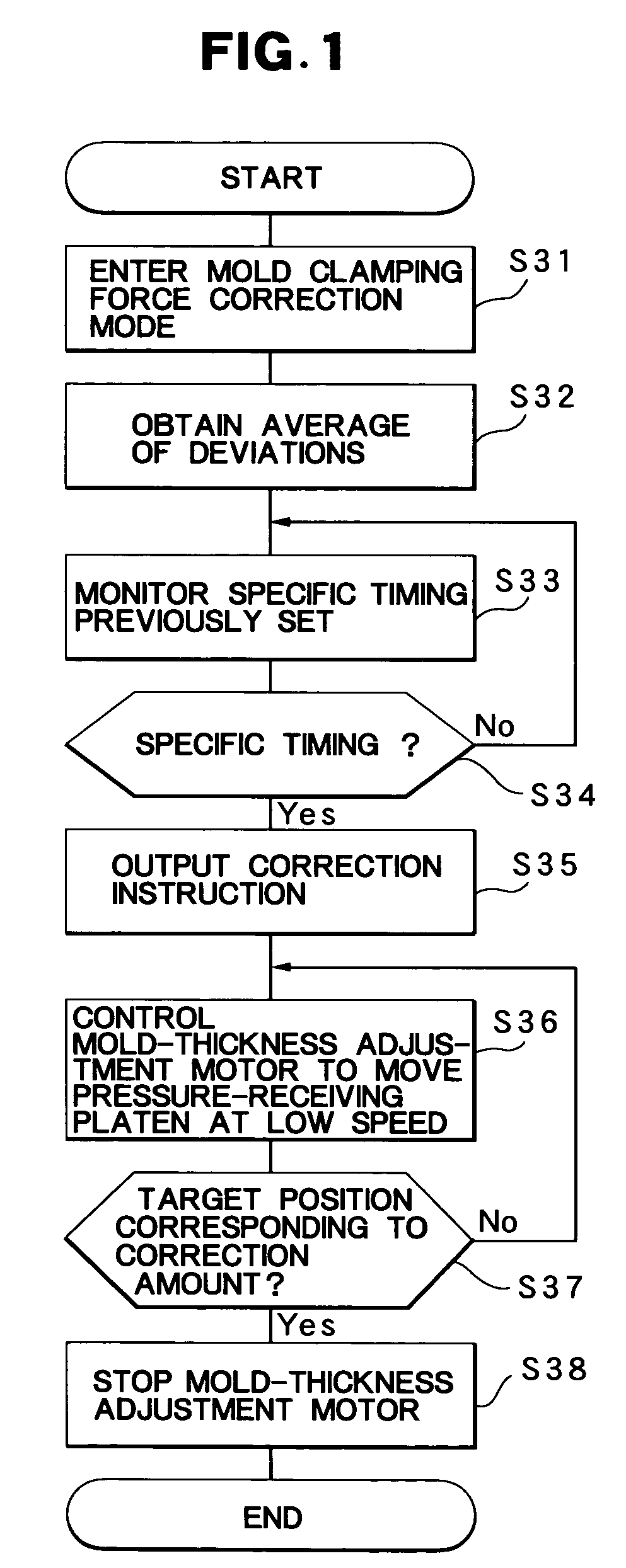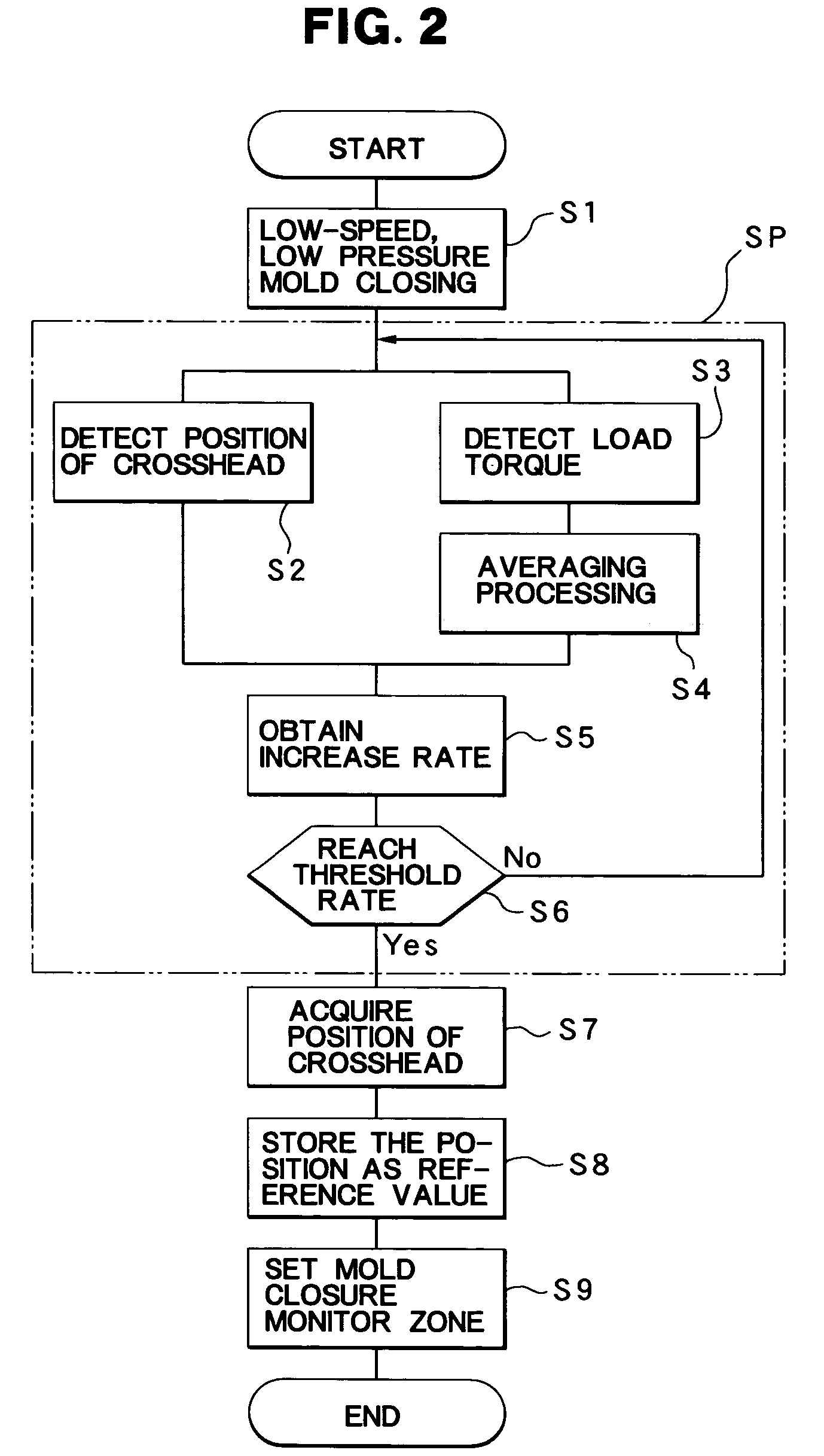Mold clamping force correction method for mold clamping apparatus
a mold clamping and correction method technology, applied in the field of mold clamping force correction method for mold clamping apparatus, can solve the problems of deterioration in quality, inability to accurately detect mold clamping force, and inability to perform accurate correction of mold clamping force, so as to reduce resetting and fine adjustment, the effect of more accurate and consistent detection
- Summary
- Abstract
- Description
- Claims
- Application Information
AI Technical Summary
Benefits of technology
Problems solved by technology
Method used
Image
Examples
Embodiment Construction
[0025]An embodiment of the present invention will next be described in detail with reference to the drawings. The accompanying drawings are illustrative of the embodiment and are not meant to limit the scope of the invention. In order to describe the invention clearly, detailed description of known parts is omitted.
[0026]First, the structure of a toggle-type mold clamping apparatus Mc to which a mold clamping force correction method according to the present embodiment can be applied will be described with reference to FIGS. 5 to 9.
[0027]FIG. 5 shows an injection molding machine M including a toggle-type mold clamping apparatus Mc and an injection apparatus Mi. The toggle-type mold clamping apparatus Mc includes a stationary platen 11 and a pressure-receiving platen 6 which are separated from each other. The stationary platen 11 is fixedly mounted on an unillustrated machine base, and the pressure-receiving platen 6 is mounted on the machine base in such a manner that it can advance ...
PUM
| Property | Measurement | Unit |
|---|---|---|
| mold clamping force Fm | aaaaa | aaaaa |
| mold clamping force Fm | aaaaa | aaaaa |
| thickness | aaaaa | aaaaa |
Abstract
Description
Claims
Application Information
 Login to view more
Login to view more - R&D Engineer
- R&D Manager
- IP Professional
- Industry Leading Data Capabilities
- Powerful AI technology
- Patent DNA Extraction
Browse by: Latest US Patents, China's latest patents, Technical Efficacy Thesaurus, Application Domain, Technology Topic.
© 2024 PatSnap. All rights reserved.Legal|Privacy policy|Modern Slavery Act Transparency Statement|Sitemap



